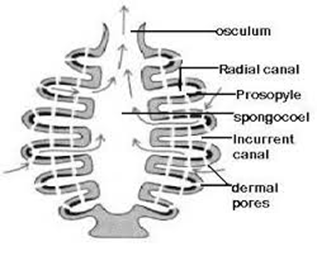Enzyme : classification, mechanism , mode of action
Enzyme
Enzymes play a very important role in our life. They are specialized proteins with catalytic activities and a great degree of specificity. All the living beings need enzymes for their biochemical reaction in which reaction starts with substrate and end in the product . Therefore Enzymes are also called Biocatalyst.
Characteristics Of Enzyme -
- Enzymes are highly specific in nature.
- All enzymes are proteinaceous in nature.
- Enzymes always catalyze the reaction.
- They act actively at optimum temperature.
- They are colloidal in nature.
- Inhibitor always inhibits the enzymatic reaction.
- Enzymes are manufactured in the living cells but they are non-living.
Enzyme Classification - According to the international union of biochemist (IUB), enzymes can be classified into six classes-
- Oxidoreductase - It involves oxidation, reduction, and electron transfer. For example, alcohol dehydrogenase.
- Transferase -It involves transfer of functional group. For example, hexokinase.
- Hydrolase - It leads to hydrolysis . For example, pepsin.
- Lyase - It leads to lysis and hence provide additional double bond. For example, aconitase.
- Isomerase - It leads to the isomerization reaction. For example, triose phospho isomerase.
- Ligase - It leads to the joining of a chain .
Factor affecting enzyme activity -
- Temperature - Initially when we increase the temperature, then the enzyme activity also increase but it increase up to an optimum level and that temperature is known as optimum temperature. Optimum temperature is the temperature in which enzyme activity is maximum. After the optimum temperature if the further temperature rises occur then enzyme activity starts decreasing.
- Effect of pH- Increase in pH increases the velocity of the enzyme but it happens up to a certain level. A pH at which the reaction reaches its maximum velocity then it is called Optimum pH.on increasing the temperature beyond the level, then the active site of enzymes starts ionizing and the rate of reaction decreases.
- Substrate concentration - Increase in substrate concentration increases the enzyme velocity of the reaction . This velocity increase up to a level or definite range and then remains constant.
- Activators - There are certain substances that have capacity to increase enzyme activity after getting introduced. These are called activators. Like, hexokinase enzyme -mg and phosphate enzyme -mn.
- Inhibitors - There are certain chemicals which after getting introduced with the enzyme reduces the activity of the enzyme. Such chemicals are known as Inhibitors.
Mechanism Of Enzyme Action - The mechanism of enzyme action was given by Michalitis menten. According to him -
- Most of the chemical reactions do not start until there is a supply of external energy for starting and speed up the reaction. Therefore the energy above the average is required for the reaction to go over its activation Barrier is called Activation Energy. An enzyme lowers the activation energy of a reaction, thereby increasing the fraction of molecules that have enough energy to attain the transition state and making the reaction faster. As the rate of reaction increases, it lowers the activation energy.
- The enzyme also posses some active sites on its surface where the substrate binds with the enzyme.
- The enzyme and substrate binds to form an enzyme-substrate complex which further changes into product . after that enzyme released out.
- The enzyme can be used for multiple reactions.
Mode Of Enzyme Action - There are two theories were given by scientist to explain the mode of Enzyme Action.
Lock & Key Model - This theory was given by Emil Fisher in 1894. It is based on the simple concept that there is just one key of particular that opens the lock in a similar way active site here is work as a lock-in which the reactant substance fits in just like a key. The reaction is as follows -
First of all the enzyme react with the substrate molecule and form the enzyme-substrate complex.
Now, this Enzyme substrate complex converted into the end product.
Induced Fit Theory -This theory was given by D. E . Koshland in 1963 according to which there is a flexibility of the region of the active site, means the enzyme changes its active site when induced by a substrate that is substrate can alter the geometry of the enzyme to get a perfect fitting of the substrate.







Comments
Post a Comment